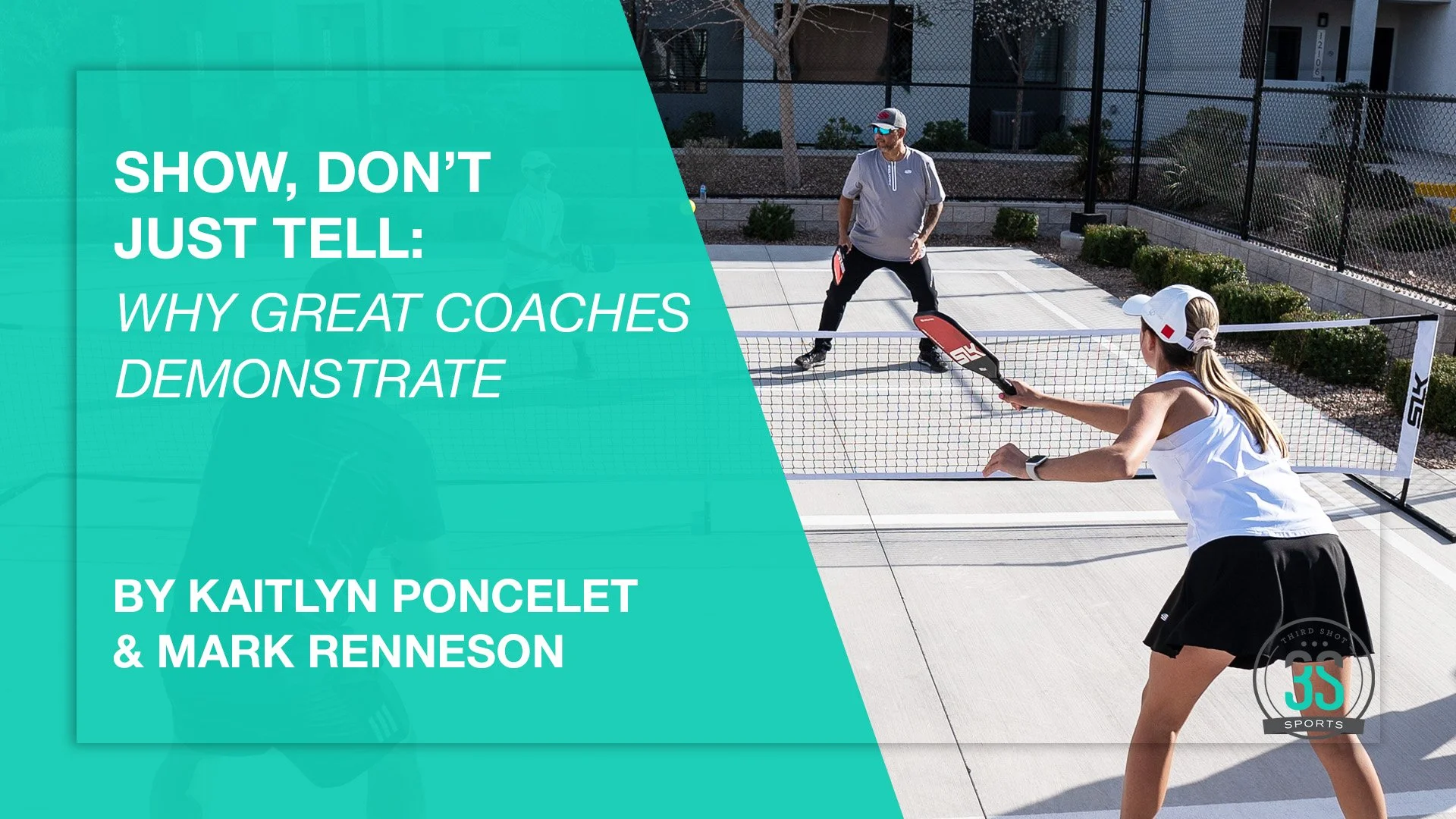When it comes to coaching pickleball, one of the simplest yet most powerful tools at your disposal is demonstrating. Whether you’re teaching technical skills or running a new drill, showing players what to do — and how to do it — can make the difference between confusion and clarity, between a practice session that drags and one that’s dynamic and effective.
If you’re serious about helping your players improve, here’s why demonstrating is essential — and how to do it well.
The Power of a Visual Model
Pickleball players, like most learners, process information better when they can see as well as hear. Describing a skill or drill with words is valuable, but a demonstration brings your instructions to life.
When teaching a skill — say, a forehand dink — don’t just explain the mechanics. Show your players exactly what good technique looks like. Highlight the paddle position, footwork, impact point and recovery. Show them what a great dink looks like. If you can demonstrate a movement that’s both fluid and realistic, players will form a clearer mental image of what they should strive for.
And it’s not just about technique. When introducing a new drill, run through it first so players can visualize how it flows. Seeing is understanding, and a quick demo often answers questions before they’re asked.
Make Sure Everyone Can See and Hear
It’s not enough to demonstrate well — you need to make sure everyone can actually see and hear you. Many coaches make the mistake of standing in one place or speaking quietly, leaving half the group guessing what they missed.
Pick a good spot: Position yourself where you’re visible to all players. The bellybutton rule is helpful here: everyone should be in a position that they could see your navel (crop top optional).
Project your voice: Make sure your instructions carry across the entire court. Use clear, concise language, and check that everyone’s paying attention before you begin. It’s ok to feel like you’re yelling. As long as your tone is friendly and professional, it will come off just fine.
Demonstrate Realistically
Demonstrations should reflect real gameplay situations. If you’re showing how to volley or hit a groundstrokes, for example, the ball should bounce before you strike it. Serve from behind the baseline, not on it. Be outside of the NVZ when you’re talking about volleys.
Reinforce by Repeating
A single demonstration often isn’t enough. Show the skill or drill multiple times so players can fully absorb it. If you’re working on a skill progression, demonstrate each step along the way. Repeating the process while varying your perspective helps lock in understanding.
The best coaches don’t just explain — they show. Effective demonstrations give players a clear visual model, clarify expectations, and create smoother, more effective training sessions. Stand where you’re visible, project your voice well, and demonstrate with realism and repetition. Being a great demonstrator and you’ll find your players learning faster and more effectively — and having a lot more fun in the process.

